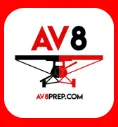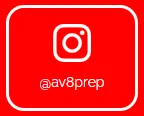Unexpected and Hidden Costs of PPL Training
Pursuing a Private Pilot License (PPL) is an exciting journey into the world of aviation, but it's crucial to be aware of the full scope of expenses involved. While you may have budgeted for flight hours, ground school, and pilot training materials, there are several unexpected and hidden costs associated with PPL training that can catch aspiring pilots off guard. In this article, we will explore these hidden expenses and offer insights on how to better prepare for them.
Unexpected Flight Training Costs
1. Medical Examination Costs
Before you can start your PPL training, you must pass a medical examination conducted by an Aviation Medical Examiner (AME). The AME ensures that you are physically fit to fly. The cost of this examination can range from $75 to $150, depending on the AME's fees and any additional tests or consultations required. Additionally, the medical certificate must be renewed at regular intervals, typically every 12 to 24 months, incurring additional expenses.
2. Headset and Flight Gear
While it's possible to start your flight training with a basic headset and minimal flight gear, many pilots find themselves upgrading their equipment as they progress. A high-quality aviation headset is essential for clear communication in the cockpit and can range from $100 for basic models to over $1,000 for advanced noise-canceling headsets. Additionally, flight gear, including charts, plotters, flight bags, and navigation tools, can cost around $50 to $200, depending on your preferences and needs.
3. Ground School Study Materials
In addition to the cost of ground school tuition or online courses, you may need to invest in study materials for the ground school portion of your pilot training. These materials can include textbooks, manuals, and supplementary resources to prepare for the written exam. Budget around $150 to $300 for study materials, depending on the books and resources you choose.
4. Practice Exams and Test Fees
To gauge your knowledge and readiness for the written exam, you may opt to purchase practice exam books or access online question banks. These practice exams can cost approximately $50 to $100. The written exam itself also comes with a fee, usually ranging from $150 to $200, depending on the testing center and location.
5. Membership Fees
Joining aviation organizations can provide valuable resources, support, and networking opportunities, but membership fees can add to your expenses. Organizations like the Aircraft Owners and Pilots Association (AOPA) or the Experimental Aircraft Association (EAA) typically charge membership fees ranging from $45 to $75 annually. While these memberships offer numerous benefits, it's important to include these costs in your budget.
6. Aircraft Rental Insurance
When renting aircraft for your flight training, you may be responsible for aircraft rental insurance costs. The expense can range from $50 to $100 per year, depending on the rental company and insurance requirements. It's essential to clarify the insurance terms with your chosen flight school or rental provider.
7. Checkride Fees
Before earning your PPL, you must pass a practical test, also known as a checkride. The checkride fee can vary, with prices typically ranging from $300 to $600, depending on the location and the examiner's charges. It's essential to be aware of this expense, which is often overlooked when budgeting for PPL training.
8. Post-License Expenses
Becoming a private pilot is a significant accomplishment, but it's essential to plan for the ongoing costs associated with flying. Post-license expenses include aircraft rental, fuel, maintenance, annual medical examinations, and insurance. It's important to consider these costs in your long-term budget, as they can add up significantly over time.
9. Emergency Fund
Unforeseen expenses can arise during your flight training journey. Whether it's rescheduling fees, weather-related cancellations, or unexpected medical costs, having an emergency fund can provide financial security and peace of mind. It's a prudent financial practice to set aside funds for such unexpected situations.
10. Pre- and Post-Flight Expenses
In addition to your flight training expenses, it's important to consider pre- and post-flight costs. These may include transportation to and from the airport, parking fees, meals during your pilot training sessions, and other incidental expenses that can add up over time. These smaller expenses should be accounted for in your overall budget.
HOW TO BECOME A PILOT!
Get your free e-book with your email
Enter your email address to get your E-Book.

Conclusion
How to Prepare for Unexpected and Hidden Costs
Now that you are aware of these unexpected and hidden costs of PPL training, here are some practical steps to help you prepare for and manage these expenses:
Create a Detailed Budget: Develop a comprehensive budget that outlines all expected expenses, including pilot training fees, exams, equipment, materials, and hidden costs. This will give you a clear view of your financial obligations throughout your pilot training.
Set Clear Financial Goals: Determine your financial limits and set clear financial goals. Having defined goals will help you stay on track and avoid overspending.
Set Aside an Emergency Fund: It's wise to set aside an emergency fund to cover unforeseen expenses, such as rescheduling fees, weather-related cancellations, or unexpected medical costs.
Network with Experienced Pilots: Experienced pilots can offer valuable insights into cost-saving opportunities and how to navigate the financial aspects of PPL training. Attend local aviation events, join online forums, or connect with pilots through social media to tap into this valuable resource.
Consider Financing Options: If paying for flight training upfront is not feasible, explore financing options. Some flight schools offer financing or payment plans to help distribute the cost over an extended period.
Regularly Review and Adjust Your Budget:As you progress through your flight training, regularly review and adjust your budget as necessary. Expenses may change, or unexpected financial challenges may arise. Regular reassessment will ensure that your budget remains realistic and manageable.
Elevate Your Skills with AV8 Prep Online Ground School Pilot Education Program
Are you ready to soar to new heights in the world of aviation? Look no further than AV8 Prep's cutting-edge Online Ground School Pilot Education Program.
Enroll Now and Take Flight Toward Your Dreams.
Whether you're aiming for a career in piloting or seeking to expand your horizons into drone operations, AV8 Prep's Online Ground School Pilot Education Program has got you covered. Join our community of aspiring aviators today and get ready to embark on an educational journey like no other.
Testimonials

Matt B.
I can't thank AV8Prep enough for their exceptional Private Pilot Ground School program. With their comprehensive curriculum and knowledgeable instructors, I was able to achieve a remarkable score of 93 on my written exam. The engaging content, interactive lessons, and in-depth explanations truly prepared me for success. AV8Prep's dedication to ensuring their students' understanding and mastery of the material is unmatched. I highly recommend AV8Prep to anyone pursuing their private pilot license. Trust me, it's the best investment you can make in your aviation journey.

Tony D.
I was pleasantly surprised by the exceptional quality of the Private Pilot Course! Within a brief timeframe, I acquired all the essential knowledge and skills required to obtain my private pilot certification. The instructors demonstrated extensive expertise, the course material covered everything comprehensively, and the support offered throughout was truly remarkable. Without hesitation, I enthusiastically endorse this course to anyone seeking to embark on a professional drone piloting journey. It's a worthwhile investment that yields significant returns!

John. C
I owe my success in passing the written FAA exam with a remarkable 97% to AV8Prep's exceptional online ground school. Their comprehensive resources and effective teaching approach made the learning process engaging and ensured I was well-prepared for the exam. I highly recommend AV8Prep to anyone seeking a reliable and effective way to ace their pilot exam.
Renewal and Currency Requirements for Personal Pilots
Requirements and Eligibility for a Personal Pilot License
%20(1).webp)
.webp)
.webp)
%20(1).webp)

Home Office
8669 Ridge Road
Melrose, Florida
Home Airport:
Jacksonville Executive (KCRG)
@2023 AV8prep
Privacy Do Not Sell My personal Info Terms & Conditions Imprint Accessibility Statement
Privacy
Do Not Sell My personal Info
Terms & Conditions
Imprint
Accessibility Statement

